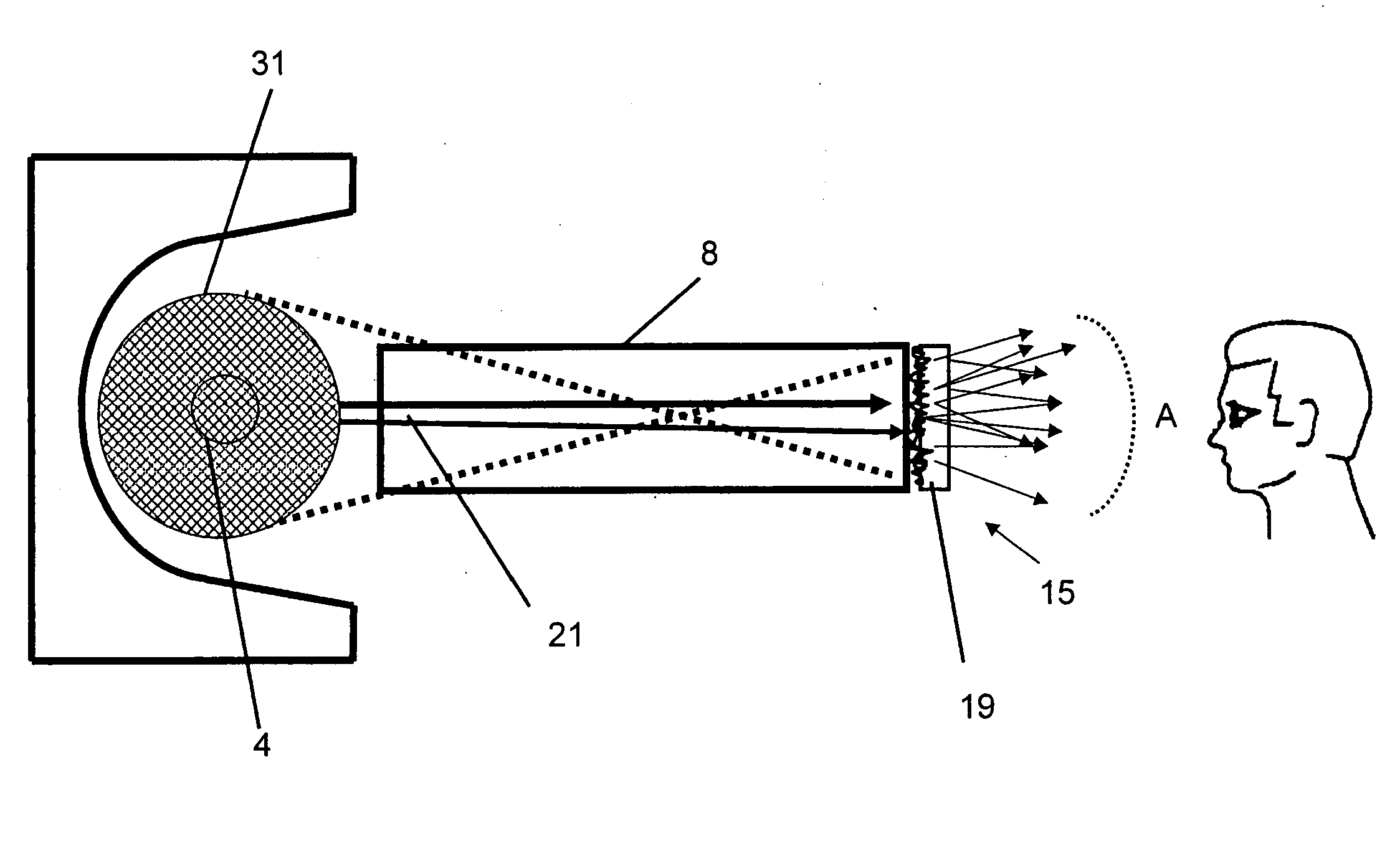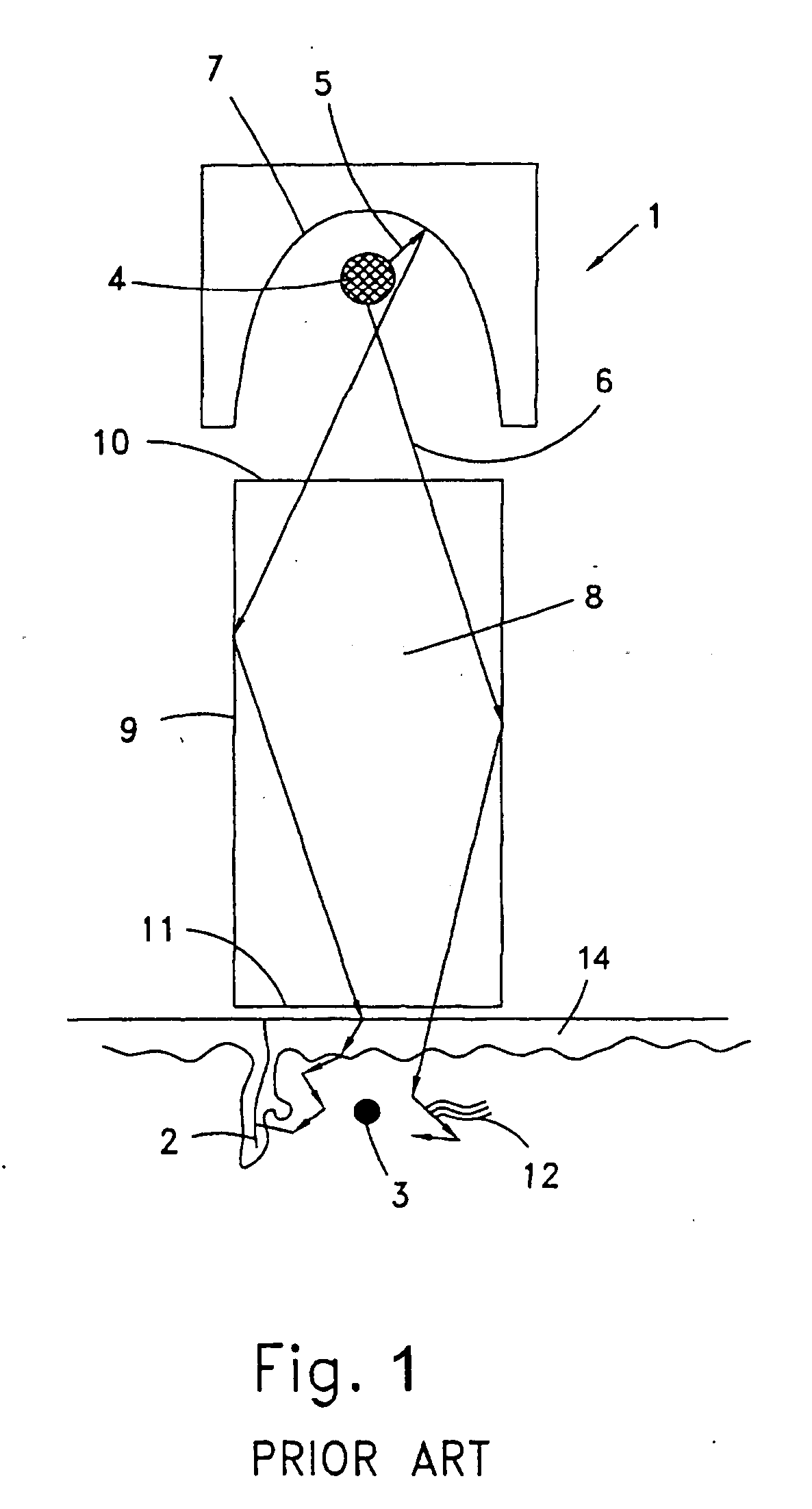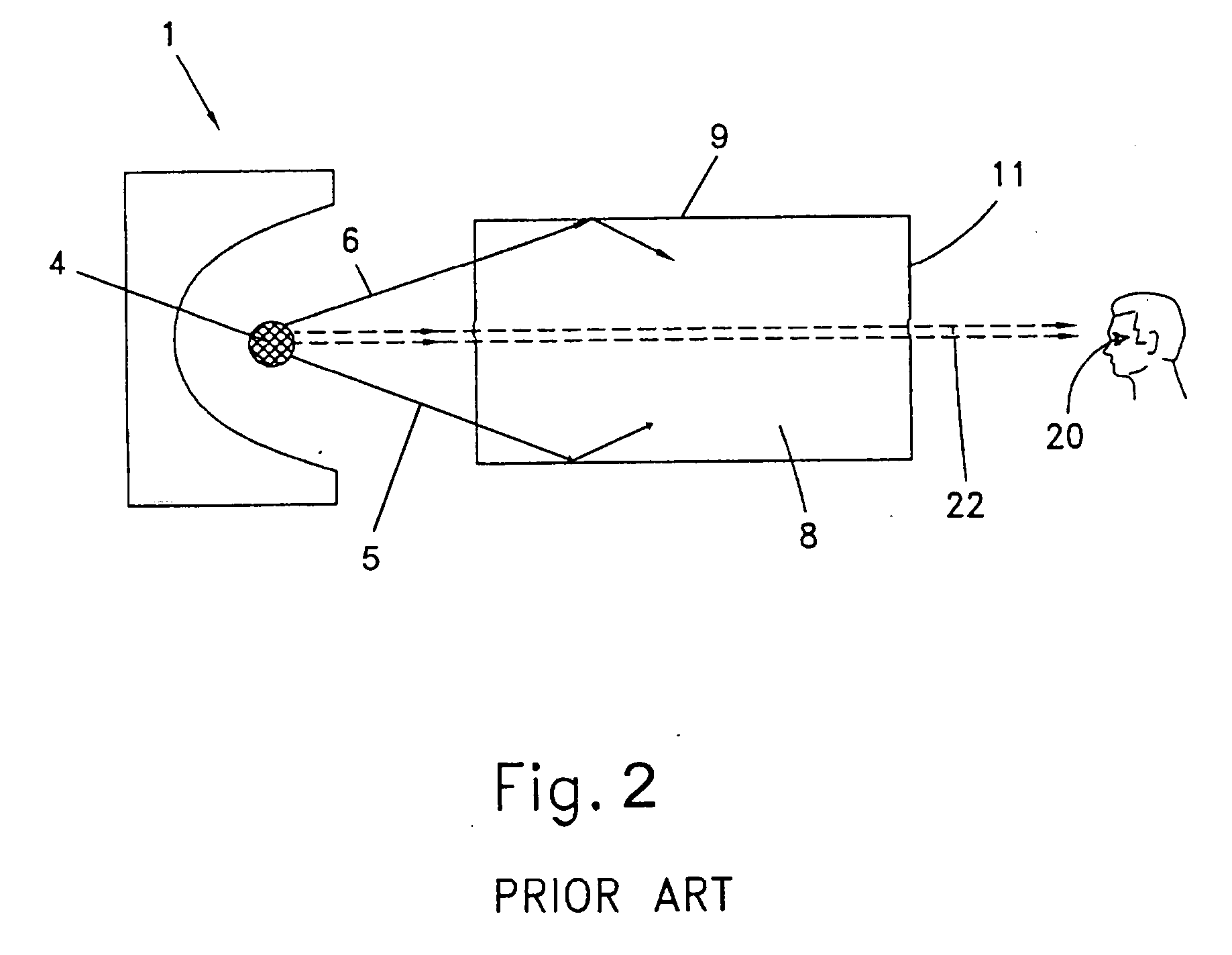Eye safe dermatological phototherapy
a dermatological and phototherapy technology, applied in the field of intense pulsed light sources, can solve the problems of eye safety, long-term risk, unavoidable staring at the treatment site, etc., and achieve the effect of improving the bodily safety of bystanders
- Summary
- Abstract
- Description
- Claims
- Application Information
AI Technical Summary
Benefits of technology
Problems solved by technology
Method used
Image
Examples
example 1
[0164]FIG. 8 illustrates the efficacy of diffused intense pulsed light, according to the present invention.
[0165] A single IPL pulse having an energy density of 20 J / cm2 and a pulse duration of 20 milliseconds was directed at an arm 113 of a patient having a hair density of approximately 40 hairs / cm2. A sapphire diffuser, which was thermoelectrically chilled to a temperature of approximately 4° C., with a diffusing angle of 10 degrees was attached to the distal end of the light guide of the IPL source. A cut-off spectral filter with a surface area of 8×40 mm, which transmits light at a wavelength longer than 750 nm, was attached externally to the handpiece of the IPL source.
[0166] The arm of the patient was marked with a plurality of dots 117 to indicate the skin target at which the IPL was to be directed, an area of 8×40 mm. The pulse of IPL light was fired on Oct. 27, 2002 and the shown picture was taken on Dec. 15, 2002, at which time the hair density within the treatment zone ...
example 2
[0169] A small-sized IPL source, which generated a relatively low energy density of 5 J / cm2, can be used as a shaver for home use, necessitating shaving only once in two weeks.
[0170] The operator may place a handpiece having a width of 3 cm and a length of 5 cm on his own face. After the operator depresses the activation switch located on the handpiece with his thumb, he may shave his face with IPL while viewing his reflection in a mirror, without need of protective eyeglasses.
[0171] A Xenon flash lamp, which has a diameter of 1 mm and a length of 20 mm, with a spectral emission of 550 nm, thereby being greatly absorbed by melanin, may be employed. One fired pulse may remove facial hair from an area of 4×20 mm. The pulse duration may be 3 milliseconds, to ensure efficacy at the low energy density 5 J / cm2, and the pulse repetition rate may be once in 3 seconds. The face of the operator may be completely shaved within 3 minutes.
[0172] A sapphire diffuser having a half-angle of 10 d...
PUM
 Login to View More
Login to View More Abstract
Description
Claims
Application Information
 Login to View More
Login to View More - R&D
- Intellectual Property
- Life Sciences
- Materials
- Tech Scout
- Unparalleled Data Quality
- Higher Quality Content
- 60% Fewer Hallucinations
Browse by: Latest US Patents, China's latest patents, Technical Efficacy Thesaurus, Application Domain, Technology Topic, Popular Technical Reports.
© 2025 PatSnap. All rights reserved.Legal|Privacy policy|Modern Slavery Act Transparency Statement|Sitemap|About US| Contact US: help@patsnap.com



